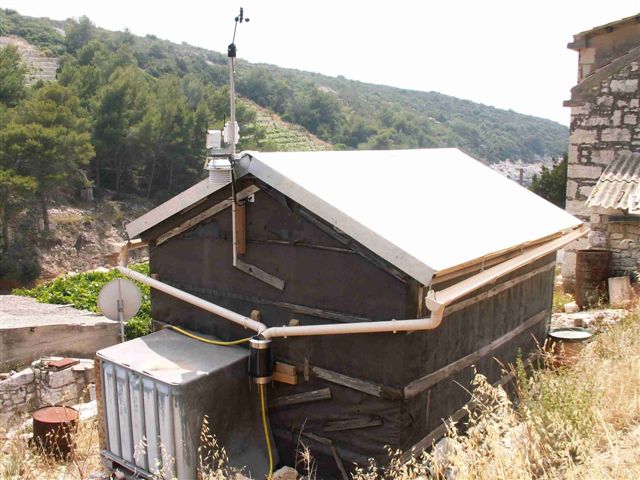Solution of the week 5
Clean water - it's right above your head
Rain falls unto roofs and then runs off. And then? You could catch it and drink it. Any suitable roof surface—tiles, metal sheets, plastics, but not grass or palm leaf—can be used to intercept the flow of rainwater and provide a household with high-quality drinking water. Rainwater harvesting systems have been used since antiquity, and examples abound in all the great civilizations throughout history.
The groundwater level may be too deep, groundwater may be contaminated with minerals and chemicals such as arsenic or salt, surface water may be contaminated with faeces or chemicals. Rainwater falls on your own roof, and is almost always of excellent quality. It enables people to manage their own water supply and provides the luxury of “water without walking”, relieving the burden of water carrying, particularly for women and children. This convenience is available at every house on which rain falls, whether on a mountain top or an island in a salt sea. It is a truly great idea.
Storage tanks
Once you catch the water from the roof (or other hard surfaces), you have to store it somewhere. Ferro-cement tanks, made with a layer of cement with steel-wire reinforcement, are usually the best and cheapest option, and can be made locally. When a tank is below ground, it is called a cistern. No idea why, really.
Roof rainwater is usually of good quality and does not require treatment before consumption. The most important thing to ensure water quality is a good lid, keeping out light and insects, and a filter, keeping out all kinds of dirt.
The cheapest tank of all is to use the ground beneath your feet. This is called groundwater recharge, and is simply accomplished by letting rainwater infiltrate in the ground, instead of letting it escape and flow away. When you need it, you pump it up.
As small or large as you want
A rainwater harvesting system might be a 500 cubic meter underground storage tank, serving a whole community. Or it might be just a bucket, standing underneath a roof without a gutter. Each 20 litre container of clean water might save a kilometers long walk to the nearest source of clean water, and as fetching water on cold, wet and slippery days is particularly unpleasant, even this small yield is highly valued. In Uganda and Sri Lanka, rainwater is traditionally collected from trees, using banana leaves or stems as temporary gutters.
It is a technology which is extremely flexible and adaptable to a wide variety of settings, it is used in the richest and poorest societies on the planet, and in the wettest and driest regions of the world. Let’s build more gutters!
Links:
- Other blogs in this series
- Indian movie by CSE (www.cseindia.org) promoting use of rainwater harvesting
- Akvopedia article on rainwater harvesting
- Wikipedia article on rainwater harvesting
- Download the book "Roofwater Harvesting: A Handbook for Practitioners" from the IRC website
- Rainwaterharvesting.org, Indian website on rainwater harvesting

